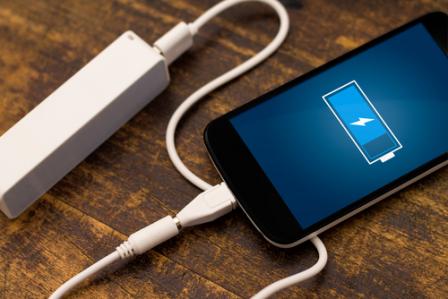How to Keep Your Devices Charged All the Time
Here’s how to keep your devices charged, topped off, and ready for use no matter if you’re in the wilderness or driving to work.
The various uses of mobile devices are astounding. Long gone are the days of using T9 to send a message a blurry image from a tiny camera phone. Now the modern cell phone has more processing power than all of mission control did to get us to the moon. Now you can capture HD video, video chat with anyone in the world, pay your bills, buy groceries, keep up with friends, and even unlock your front door.
I could go on, but you get the point. We use our portable devices for pretty much everything these days and sometimes not having these devices could mean a minor inconvenience or a matter of life and death. That sounds a bit extreme, but having directions out of a dangerous situation, or the ability to call or signal for help, can make a huge difference in any situation.
Power Bricks
I’ve always been a sucker for backups and redundancy. Maybe it’s because I’m an engineer, or a a geek. Or perhaps being prepared is just smart. One of the most invaluable tools I carry around with me is a USB battery pack. Trust me, it doesn’t sound sleek or amazing, but if I had a nickel for every time someone had to borrow it from me, I’d be able to buy a million more of power bricks.
So what is a power brick? Well if you’re not familiar with them, they are basically battery packs you plug a USB cable into. Instead of plugging your phone or tablet into the power adapter in your wall, you can plug it into a little power brick and—voila!—your device will begin to charge as if it’s plugged into a wall.
A few years ago, these devices were pretty expensive, upwards of $100 for a heavy and bulky model. Now many companies make these power bricks to be the size of a tube of lipstick; others are powerful enough to jumpstart your car.. The price can range from $10 to $100, and they come in all sorts of shapes and sizes.
All in all, they do the same thing: they provide supplemental power to your devices when there’s not an outlet nearby.
Here is an example of the small one: Click on Link for information
Here is an example of the large one: Click on Link for information
Know the Terms
Both of these power bricks are essentially the same thing. The difference is that the bigger one can charge more devices, or a single device for longer. There are a few terms to keep in mind when looking up these power bricks that can make you a much more informed shopper.
The first of these terms is the battery capacity. This is generally measured in “mah” which stands for milliamp hours. In general, most modern cell phones have a capacity of around 3000mah in their batteries. This means when you look online at buying a battery power brick. The small one I linked to above is good for about one charge, whereas the much larger battery power bricks can have capacities in the 20,000mah range. This means that the large version can charge a standard cell phone over six times until it needs to be charged again.
The next term is amperage, which is abbreviated with a capitol ‘A.’ Amperage will affect how fast your device will charge. Most phones can charge up to 2A whereas tablets can charge up to 4A. Ideally, when I buy a backup power brick, I always shoot for one that is 2A. If you were to charge on .5A or 1A your device would still charge, but not nearly as fast.
Amperage is the measure of electrical current which you can think of like a water hose. Your phone’s battery is similar to a bucket that you have to fill up. If there is a higher amperage or flow of water, the faster the bucket will fill up.
You’ll notice that I haven’t mentioned voltage here, and that’s because all USB adapters are 5 volts. The only thing that varies is current. Now if your phone charges at a max of 2A and you put it on a 4A charger, your phone will only charge at 2A. Your phone has circuitry that allows you to put it on a wide variety of amperages.
Solar or Not to Solar?
I’ll talk more soon about solar power, but in a nutshell, I don’t buy any solar chargers for my devices unless they come with an attached or built-in battery. Why? you ask. Setting your phone in direct sunlight (especially in California where I live) is a fast ticket to overheating it. If your phone and the charger have to be in the sun you run the risk of cooking your phone.
That’s why I really like solar chargers with attached batteries. They allow you to set a solar charger in the sun to charge its own battery, which you can then use to charge your phone in the shade.
For this I have two recommendations of products I’ve tried and had great success with. First is the SolarTab: it is the same size as a tablet and can easily slip into a bag. It carries a massive battery and the solar panel charges it pretty quickly. The next one I use is made by Anker and it’s three solar panels in one with a pouch you can put your electronics into. What I love about this is that you can easily attach it to a backpack, bike or something else you would use outside. It charges quickly because of the amount of solar panel area, and it folds up nicely.
If you’re looking at a solar charger other than one of those two, I recommend looking at one where the panel is bigger than whatever device you’re charging. Otherwise it will take forever.
Car Chargers
Last but not least are car chargers. This one is simple. Just head on over to Amazon and buy one of these for every car you own. They have two USB ports at 2A which allows both my wife and I the ability to charge our devices quickly and it fits in every car because it’s so small. I even have one of these in my backpack just in case! They are $10 but sometimes go on sale for $5.
Be sure to check out all my earlier episodes at techtalker.quickanddirtytips.com. And if you have further questions about this podcast or want to make a suggestion for a future episode, post them on Facebook QDTtechtalker.
Until next time, I’m the Tech Talker, keeping technology simple!







